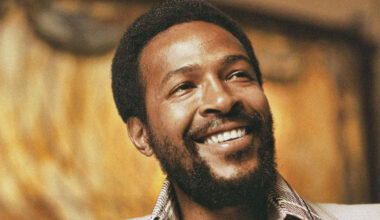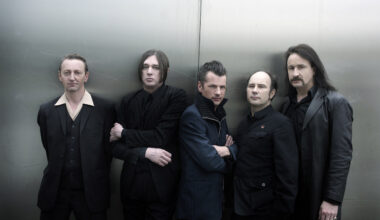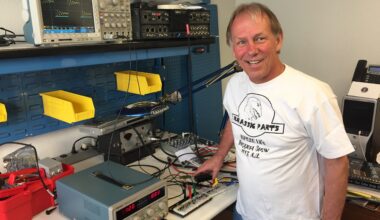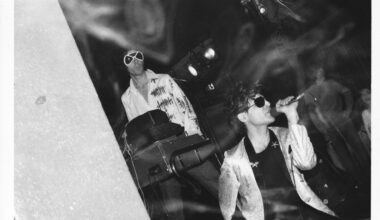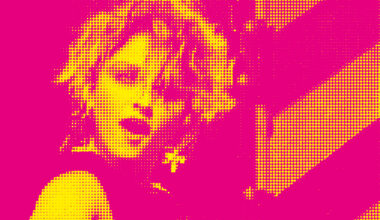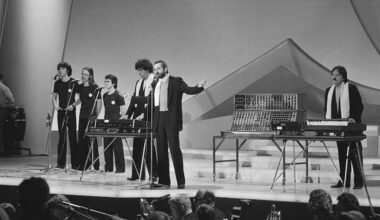The 14 hour Technicolor Dream event at London’s Alexandra Palace 50 years ago heralded the arrival of counterculture and sowed the seeds of the modern multimedia music experience
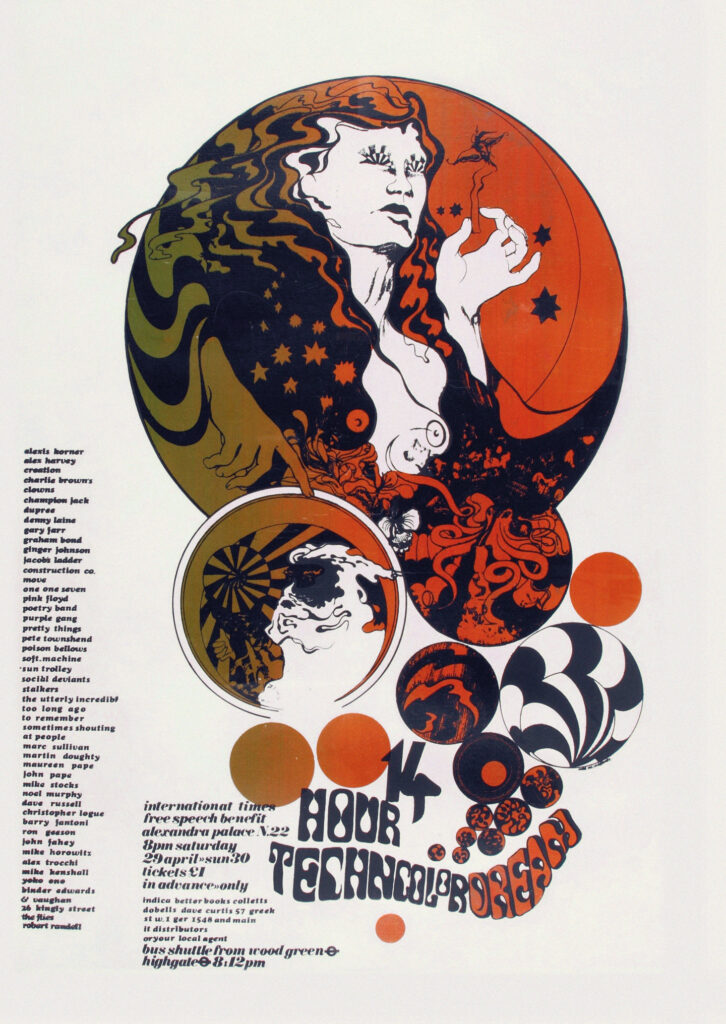
t was 50 years ago, 29 April 1967, when London’s counterculture of freaks, hippies, poets, musicians and acid philosophers gathered at Alexandra Palace for 14 hours of hippie mayhem.
The spectacular promised 30 “top groups”, “beautiful people” and “kaleidoscopic colour” and culminated with Pink Floyd playing as the sun rose. Over 10,000 people showed up, paying £1 for the privilege of being a part of “a giant benefit against fuzz action”.
The event was organised by counterculture lynchpins, including John “Hoppy” Hopkins and Dave Howson, as a benefit for International Times magazine, aka IT, the legendary fortnightly publication whose founders included Barry Miles. The magazine needed investment to keep it afloat, and while Paul McCartney had helped out with a few Beatle quid, a fundraiser was required. When the magazine’s offices were raided by police in April 1967 (the above-mentioned “fuzz action”), the prospect of an expensive court case fighting an obscenity charge added some urgency to proceedings.
On the night, as dusk fell, fireworks were fired into the sky from Alexandra Palace.
“It was like a Bat-Signal telling the freaks to come out,” says Barry Miles, “Hoppy and Dave had organised searchlights to direct at the clouds, like a big Hollywood premiere, and they could be seen all over London. That was impressive.”
Inside the building, there were two stages either side of the vast main space, one for rock bands, the other for poetry readings and acoustic performances. There was a full-sized helter-skelter, which was free to anyone who fancied a go. Among the more bizarre attractions of the evening was a fibreglass igloo, which was available for the smoking of banana skins.
A crew from the high-minded BBC current affairs TV programme ‘Man Alive’ treated the event as a sociological petri dish. When they came across some snoozing casualties tucked up in corners they prodded them awake to ask them why they came, and what they expected. Bewildered, none of them gave a coherent response.
Despite their apparent adult objectivity, the TV crew weren’t above pointing their cameras at the gyrating buttocks of the go-go dancers employed by London band The Flies. As if that wasn’t enough outrage, the band then instigated a flour bomb fight, much to the displeasure of some London mods who’d turned up to find out what the fuss was all about and got their nice strides all messy.
“They’re all mad,” says one, in a tone of disbelief and derision, but he’s witnessing the changing of the guard. He and his handy pals already look like relics of an earlier age as the spaced-out hippies and middle class intellectuals cavort around like kids and pass out in concrete corners.
“A group of mods did arrive,” remembers Miles. “They threatened to disrupt the whole thing, but a group of girls in flowery face paint and granny dresses gave them LSD and they remained peaceful throughout the event looking at the pretty lights. When they returned to their old aggressive selves in the morning it was all over, however. Some hippies made a 20-foot-long paper joint that they were carrying through the park, so the mods went and kicked that to pieces.”
The Beatles had finished making ‘Sgt Pepper’ just a week earlier.
“John Lennon was invited and forgot about it,” says Miles. “Then he and John Dunbar [artist and co-owner of the Indica Gallery with Miles] were watching the nine o’clock news on TV and saw a clip about it. John called his chauffeur and they arrived in a Rolls Royce. As far as I remember they were both out of it on LSD, and if you look at the news clips of them there, they do seem a bit foggy.”
Despite Lennon and Dunbar and the spiked mods, LSD was relatively thin on the ground.
“People were stoned, but mostly on pot,” says Miles. “LSD was never really widespread in this country, it wasn’t like San Francisco.”
So did they have a doctor in the house, just in case?
“Yes, we had doctors there, of course,” says Miles. “We even had a doctor at the launch party for IT in October 1966 at the Roundhouse.”
Pink Floyd arrived at three in the morning, having already played a show in the Netherlands earlier that night, travelling back to the UK on a ferry. Miles remembers that Syd Barrett and Floyd manager Pete Jenner were both tripping. The band were exhausted, but played a literally blinding set, the golden light of dawn shining through the building’s windows and reflecting off Syd’s mirrored Fender Telecaster into the eyes of the frazzled audience.
After Floyd, it was all over, and the heads stumbled out into the dawn of the summer of love, the release of ‘Sgt Pepper’s Lonely Hearts Club Band’ just a few weeks away.
“I remember Hoppy shaking hands with everyone as they left, as if it had been a big dinner party,” says Miles.
The night had been a huge success, and despite most of the revenue from ticket sales being pocketed by the sellers, enough cash was generated to help IT stay in business. In retrospect, does Miles think the night was an important shift in pop culture?
“That’s a big question,” says Miles. “It was a fun event that has been exaggerated in importance. The UFO Club had more impact on the music scene. It certainly wasn’t the first big event: the reason we used Alexandra Palace was because Hoppy had been to all-night jazz raves there. It wasn’t a festival in the sense of Woodstock, but it did reveal the size of the underground scene and, more importantly, showed how many people were prepared to devote their time and skills to putting it on. It did confirm the existence of the counter-cultural scene though.”
‘In The Sixties’ by Barry Miles is reissued by Rocket 88
